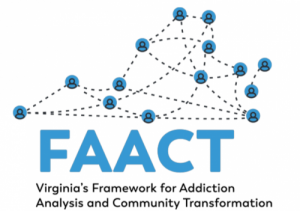How Data-Sharing Helped Virginia Scale its COVID-19 Response
How Data-Sharing Helped Virginia Scale its COVID-19 Response
In 2020, the Commonwealth of Virginia, like many states, faced the unprecedented challenge of responding to the spread of COVID-19. As more than 683,000 Virginians were infected with the virus, the Commonwealth lacked real-time visibility into virus hot spots, hospital bed, and ventilator availability. In addition, the state needed to distribute its limited resources — first personal protective equipment (PPE), then testing kits and vaccines — to first responders and healthcare organizations without the ability to forecast where this equipment would be best utilized. The state also needed to train more than 36,000 EMS providers on COVID response and help them prepare for a new normal. The number of 911 calls decreased, due to COVID fears, but the severity of the calls increased significantly. In short, leaders in the Commonwealth had to make hundreds of decisions about how to respond to and manage the pandemic, and they needed a solution to make sure those decisions were data driven.

Virginia’s COVID Response Dashboard (CRD) was built as an extension of the existing Framework for Addiction Analysis and Community Transformation (FAACT) system. By using FAACT’s secure data-sharing platform, Virginia was able to launch the CRD within days of shut-down orders. The platform combines previously siloed data from Virginia’s Department of Health, Department of Emergency Management, Hospital and Healthcare Association, Department of Corrections, local and regional jails, and labs—including COVID-19 test results, care facility status, and PPE availability data. A self-service analytics layer allows these organizations and the Governor’s office to make more data-driven decisions, collaborate more effectively, and rapidly adapt to the changing nature of the pandemic. In early 2021, Virginia launched a Vaccine Dashboard that integrates directly into the CRD to share vaccine data from across the state, enabling local health districts to better understand vaccination trends in their region.
Since Virginia had already established a data sharing platform and data governance and sharing policies, CDO Carlos Rivero and Gov. Ralph Northam were able to quickly roll out the new system in a matter of days, which otherwise would have taken months.
“This expansion of FAACT unites information from sources across the Commonwealth to provide decision makers with the insight needed to respond to the novel coronavirus pandemic,” said Rivero. “Had we not previously had the technical, legal, and governance infrastructure in place through FAACT and the corresponding Commonwealth Data Trust, the expansion that took us just days to complete would have taken months. We were prepared and that preparation allowed us to best support our constituents and communities during a time when it’s needed the most.”
The system provides state and local healthcare organizations with the data needed to make effective decisions in the face of a crisis, as they can now track cases, test results and capacity, PPE availability, hospital staffing, Intensive Care Unit (ICU) capacity, and more. The state’s vaccine dashboard also allows local health districts to better understand key vaccine metrics in their communities. Even as vaccination rates stalled in some areas, the state’s data analytics team was able to build custom reports to guide vaccination efforts in rural areas of Virginia.
The COVID Response Dashboard allows the Governor to carefully monitor COVID infection, vaccination, and mortality rates. As the Commonwealth continues to utilize the CRD, the state is also evaluating the overall success of the COVID data analytics program by considering the number of participating organizations and shared data sets within the repository, vaccination rates, the ability to forecast resource needs throughout the state, support the mental health of EMS and other first responders, and overall citizen feedback. Data sharing has helped state offices rebuild trust with their constituents at a time of great stress across the county.

